- Joined
- Apr 4, 2004
Anandtech | Hexus | Firingsquad | XBitLabs | HardOCP | PCPer | Tech-Report | Beyond3D | Sudhian





Anandtech's Conclusion
HotHardware's Conclusion
This is HUGE letdown (atleast for me) I was looking forward to this for the past 6-8 months.
Looks like another for AMD.
for AMD.
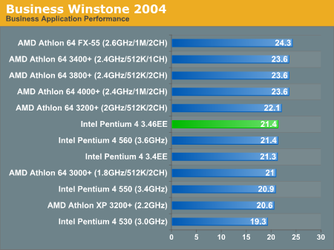
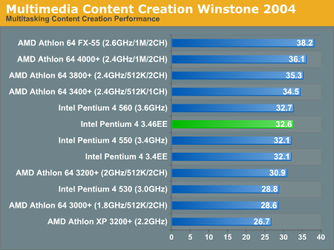
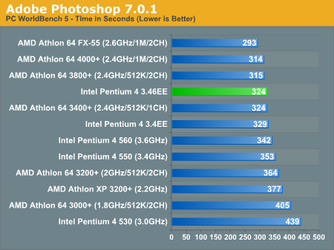
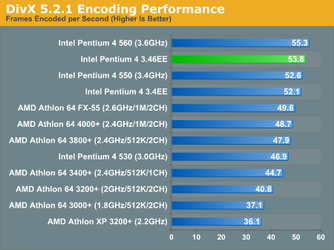
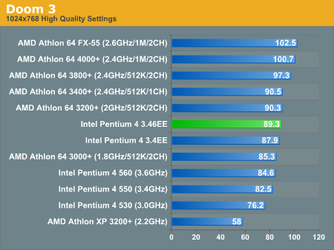
Anandtech's Conclusion
So there you have it folks - the 1066MHz FSB does absolutely nothing for performance. The 3.46EE does manage to outperform its 3.4GHz/800MHz FSB predecessor, but the margin of improvement is negligible. Intel desperately needs a win here and other than the more affordable price of the Pentium 4 560, there's very little going for the CPU king these days. It will take higher speed Prescott CPUs or dual core in order for the added bandwidth of the 1066MHz FSB to truly be of any use - and it will take lower latency DDR2 memory to finally give the latest Pentium 4 platforms lower latency memory access than the ones they replaced.
The move to the 1066MHz FSB is in sharp contrast to the past two FSB bumps that we've seen from Intel. The introduction of the 533MHz FSB back in 2002 yielded up to a 12% gain in gaming performance, and a 3 - 6% gain in individual applications as it was paired with PC1066 RDRAM. Then came the 800MHz migration that showed a 3 - 9% increase in gaming performance, and just under a 12% increase in professional application performance. But with the move to the 1066MHz FSB we have a platform launch that, in the spirit of the 925X and 915 launches, does virtually nothing for performance.
HotHardware's Conclusion
When we look at the entire spread of benchmark readings we took here for you today, we see the P4 pulling down six wins to the Athlon 64's five wins, with two virtual draws in the 3DMark05 and Lame MP3 tests. These metrics should be contrasted by the fact that the benchmarks that were won by the Athlons were more mainstream desktop and gaming applications that many of our readership finds most important. The P4 definitely excels in audio and video media encoding, as well as mutlithreaded applications like Cinema 4D in our Cinebench benchmarks. The Athlons were the clear and distinct victors everywhere else. Finally, we noted a smallish 1 – 3% advantage for the new 3.46GHz P4 Extreme Edition and i925XE chipset, versus the current standard P4 EE and the i925X.
The new 3.46GHz Pentium 4 Extreme Edition coupled with the i925XE chipset offers a small performance gain for the enthusiast in certain gaming scenarios and the occasional Media Encoding or 3D Rendering workload. Again, the performance gains we observed were in the 1 – 3% range, hardly what we expected frankly. In fact, equal performance gains can be realized just by making the move to lower latency DDR2 DRAM set at CAS 3, 3, 3, 8 timings. With identical system memory timings in our i925X and i925XE systems, the net gain from a high-speed 1066MHz FSB is observable but frankly nothing to write home about, at least in the applications we tested it in.
This is HUGE letdown (atleast for me) I was looking forward to this for the past 6-8 months.
Looks like another
 for AMD.
for AMD.